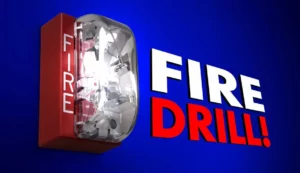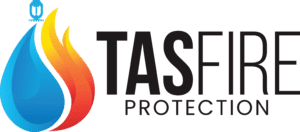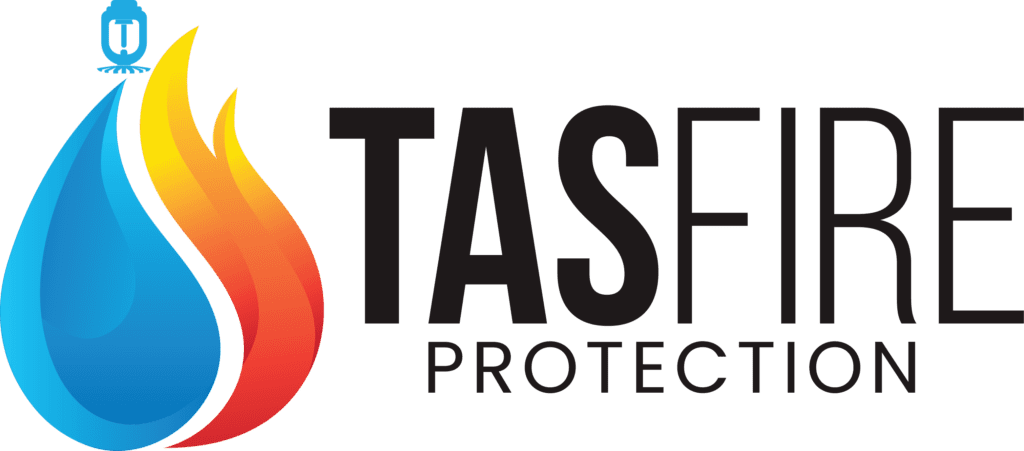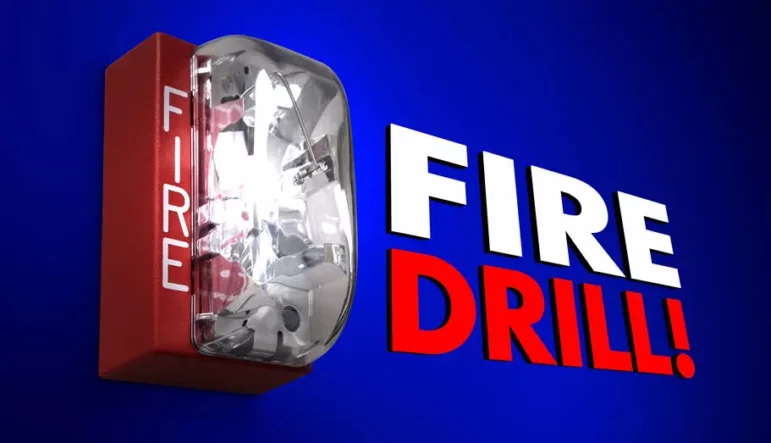How to Conduct a Fire Drill at Work: An Ultimate Guide to Prepare the Employees…
 Fire is a major hazard in the workplace. It can put employees at severe risk, causing serious injuries or even the loss of life. Fire drills are essential for fire prevention. They help to acquaint employees with the procedures to escape from fire by promoting awareness, communication, and coordination in the event of an emergency. In this blog post, we will discuss everything you need to know about fire drills, including fire drill meaning, importance, execution, and more. We will also provide tips on how to create a culture of safety and preparedness in the workplace. Let’s dive in.
Fire is a major hazard in the workplace. It can put employees at severe risk, causing serious injuries or even the loss of life. Fire drills are essential for fire prevention. They help to acquaint employees with the procedures to escape from fire by promoting awareness, communication, and coordination in the event of an emergency. In this blog post, we will discuss everything you need to know about fire drills, including fire drill meaning, importance, execution, and more. We will also provide tips on how to create a culture of safety and preparedness in the workplace. Let’s dive in.
What Is a Fire Drill?
A fire drill is a strategically planned and organised practice on how to evacuate a building or organisation in the event of a fire or an emergency. This is piloted to make sure that every member of the organisation is aware of the sound of the fire alarm and the evacuation procedure. This could teach them how to exit the building safely and quickly without panic or confusion. There are two main types of fire drills:
- Live fire drills: A live fire drill can be realistic in that a few participants will be aware that this is a mock drill. In the event of a fire, fire drill sound is enabled, and everyone in the building evacuated as if there were a real fire.
- Role playing drills: This is an effective technique to educate people through a role playing drill. To familiarize people, the team will sit together and act out a realistic scenario and the associated response.
Why Are Fire Drills Important?
Fire drills are important for any organisation for several reasons. They assist people in an organisation with the evacuation procedures, helping them to ensure building safety in the event of a fire. It can not only help ascertain any possible fire hazards, ensuring safety and security, but also have the following benefits:
- Readiness: During fire drills the offices learn how to activate the alarm and evacuate, ensuring that these activities are automatic responses in real-world scenarios.
- Reduced Panic: Chaos and panic are often apparent in a fire emergency. Drills enable employees to respond more rapidly by fostering an understanding and routine, which reduces dread.
- System and Route Check: Evacuation drills are the best way to check out the performance of fire alarm systems and their ease of use of evacuation routes.
- Enhancing Skills: This is a great opportunity to train staff members on how to use fire fighting equipment like fire hydrants, fire hoses along with other fire safety gear.
- Cultivating a Safe culture: Regular office fire drills help to promote a culture where workplace safety is prioritized.
While planning and conducting a fire drill, all employees together with those who are on leave or working remotely should be encouraged to involve in fire drill. This makes sure that everyone, regardless of their organisation role or designation knows the location of the firm alarm and the safer area.
How to Conduct a Fire Drill at Work?
Fire drills are an important part of fire prevention. It acts as an essential tool for protecting the safety and security at the workplace. But what actually is a fire drill in business? In the event of a fire emergency, businesses need to safeguard their employees while they protect the property from fire.
All employees should be prepared to act during an emergency regardless of the frequency of fire drills. How long should a fire drill take depends on various factors like the building size, fire alarm system setting, evacuation speed etc, but it typically comes between 5 to 15 minutes. Here are a few benefits of conducting fire drills in business:
- Acquaint employees evacuate the building safely in the event of a fire.
- Identify potential fire hazards and help to correct them.
- Improve communication and teamwork during an emergency.
- Reduce panic and confusion in the event of a fire.
Try following these steps to ensure successful fire evacuation trials or fire drills:
- Preparing for the Fire Drill: Choosing a convenient date and time for fire drill at the office is the first step in planning a fire drill. Try to avoid scheduling fire drills during peak hours or during times when employees are likely to be absent.
- Communicate the Fire Drill: Once the date and time have been decided, inform the employees regarding the date, time details of designated safe area, fire drill sound, evacuation procedures, etc. Also, try including any special instructions for employees with disabilities.
- Identify Evacuation Routes: It is important to identify the evacuation routes for the office fire drill. Make sure they are clear, accessible, and also inform all employees about the evacuation routes which can assist them in the event of an emergency. Clear signage, layouts of the floors and regular updates can help everyone exit the building safely and securely.
- Assign Roles and Responsibilities: So as to ensure a well structured and organised evacuation plan and process assigned roles and responsibilities to people and make them play different roles like fire wardens, evacuation coordinators, first aid responders etc during the fire drill.
- Special Instructions for People with Disabilities: Hazards can happen at any time. Organisations should stay alert to provide with any special instructions as well as educate and train the employees including people with disabilities to know the location of fire alarms and designated safe areas.
Conducting a Fire Drill
On the day of the fire drill, set off a fire alarm system as soon as possible to force an immediate evacuation as per the predefined fire drill procedures. For added safety and security people should avoid using lifts or elevators and instead go with staircases. As we progress through the fire evacuation procedures, it’s quintessential that we keep our composure and follow the prescribed evacuation routes rather than panicking.
Following the evacuation, all employees must come together and meet at the designated safe area. The person in charge should call everyone by roll to make sure of the head count. This step is really important and ensures the safety and security of employees. Doing this assesses the effectiveness of planning and organising a fire drill and also checks with the preparedness and readiness of an organisation in the event of an actual emergency.
Evaluating a Fire Drill
Conducting a fire drill should be done in the most realistic way. By strategically involving all employees irrespective of roles and responsibilities at the organisation can help analyse the effectiveness to cope with a crisis. Person in charge like fire drill coordinator or fire drill instructor can collect feedback from participants to prepare a fire drill report.
Genuine feedback is always useful as it helps them look for areas of improvement like preparedness, coordination, safety concerns, communication, clarity on evacuation procedures and routes etc. This can help them identify the common mistakes to avoid while conducting a fire drill and focus on the areas requiring further improvement and bring in better fire safety strategies.
Creating a Culture of Safety and Preparedness
Fire drills are more than just a drill. They hold significant importance for any organisation. They are not only essential to safeguard the employees but also protect the building, its surrounding environment and valuable assets. It is important to understand that the main purpose of fire drills and evacuation programs is to evaluate the readiness of an organisation in handling an emergency crisis and ensuring safety of people and the building premises. Likewise, these can examine the efficiency of fire fighting equipment including fire doors, smoke alarms, fire extinguishers, heat detectors.
Frequently Ask Questions (FAQs)
- What is the purpose of a fire drill? A fire drill helps organizations assess their readiness for emergency crises and ensure the safe evacuation of employees in case of a fire or other crisis.
- Why are fire drills important in the workplace? Fire drills are important at the workplace as they train employees with fire drill sound, fire drill procedures, evacuation procedures, identify possible fire hazards, improve communication and cooperation during emergencies, eventually reducing any possible confusion.
- What are the different types of fire drills? There are two main types of fire drills: live fire drills, which pretend real emergencies, and role-playing drills, where participants act out realistic scenarios to educate, train, and prepare individuals.
- How often should fire drills be conducted in a workplace? The frequency of fire drills at the office varies. Yet they should be planned and conducted regularly to ensure that all employees are well-prepared. Office fire drills can be coordinated annually or semi-annually, considering factors like size and occupancy of the building.
- What benefits do fire drills offer for workplace safety? Fire drills at the office help employees acquaint themselves with fire drill evacuation routes, boost their emergency response skills, and identify any potential areas that need improvement in the evacuation plan or fire safety equipment.
Contact Us (905-870-7779) for a Free Consultation!
—

About TAS Fire Protection
TAS Fire Protection offers comprehensive and cutting-edge fire, security, and electrical services to clients with residential, commercial, industrial, or high-rise properties. Our team of highly skilled professionals has years of experience in installing, maintaining, and inspecting fire, security, and electrical systems and equipment.
> Learn More

